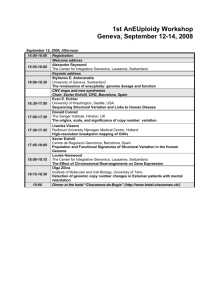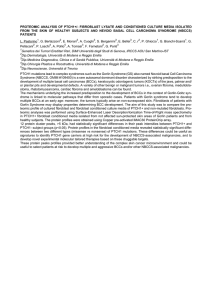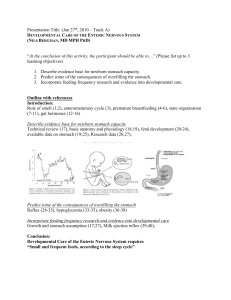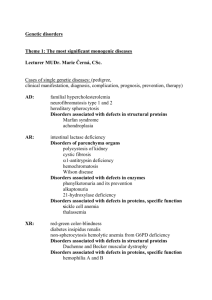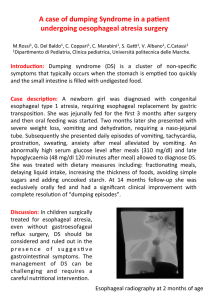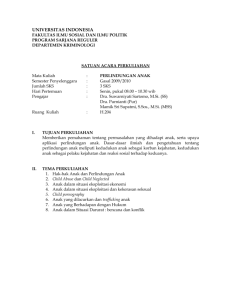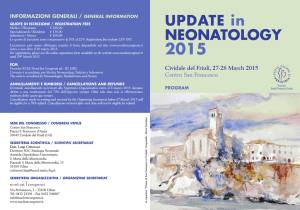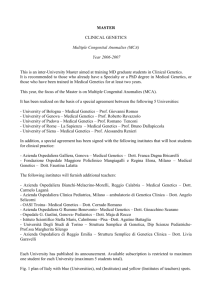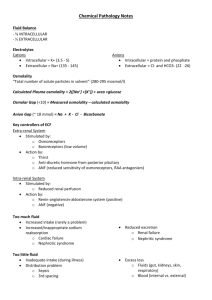Pediatric Cariovascular Disfunction
advertisement
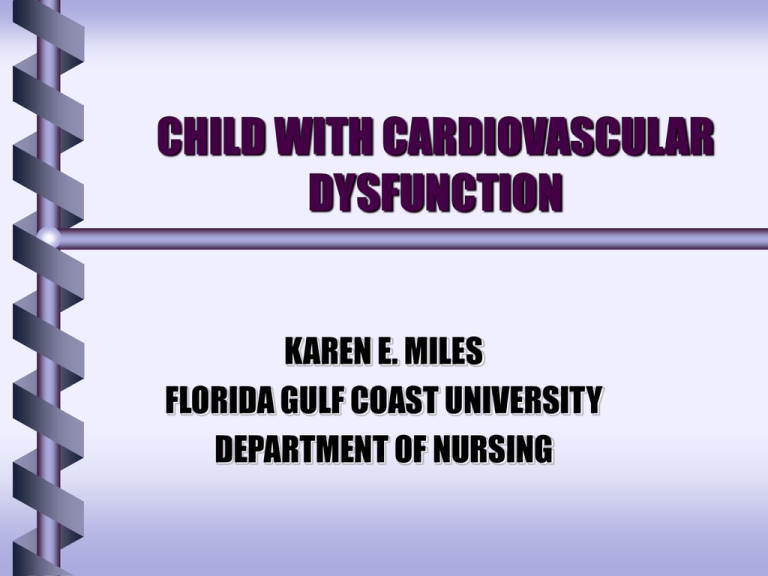
CHILD WITH CARDIOVASCULAR DYSFUNCTION KAREN E. MILES FLORIDA GULF COAST UNIVERSITY DEPARTMENT OF NURSING CONGENITAL HEART DEFECTS INCIDENCE 1-2% of all live births Increases to 3% if have another child with CHD 4-10 in 1000 live births ETIOLOGY Multifactorial Inheritance Others Maternal Rubella Maternal Alcoholism Maternal Diabetes Mellitus Down Syndrome Trisomy #13 & #18 Turner’s Syndrome Marfan’s Syndrome Di George Syndrome CLASSIFICATION OF CHD LEFT-TO-RIGHT SHUNTING LESIONS Ventricular Septal Defect (VSD) Atrial Septal Defect (ASD) Patent Ductus Arteriosus (PDA) AV Canal or Endocardial Cushion Defect OBSTRUCTIVE LESIONS Pulmonary Stenosis (PS) Aortic Stenosis (AS) Coarctation of Aorta (COA) ADMIXTURE LESIONS Transposition of Great Vessels (TGV) Total Anomalous Venous Connection (TAPVC) Truncus Arteriosus RIGHT-SIDED OBSTRUCTIVE LESIONS Tetralogy of Fallot (TOF) Tricuspid Atresia Pulmonary Atresia PULMONARY VENOUS OBSTRUCTIVE LESIONS Mitral/Aortic Atresia Cardiomyopathy OTHER Hypoplastic Left Heart Syndrome NURSING CARE OF CHILD WITH CHD A. Understand the causes, pathophys., clinical manif., diag. evaluation, and therapeutic management of CHF Causes: Volume overload Pressure overload Decreased contractility High cardiac output demands Clinical Manifestations Tachycardia - resting rate greater than 160 beats/min in infants Diaphoresis Easily fatigued Poor exercise tolerance Poor perfusion - cold extremities, weak pulses, low BP, mottled skin Tachypnea - greater than 60 breaths/min in infants Mild cyanosis Dyspnea Retractions Orthopnea Wheezing cough Hepatomegaly Weight gain Edema Distended neck & peripheral veins DIAGNOSTIC EVALUATION Chest X-Ray ECG Echo-cardiogram B. PROVIDE SAFE & THERAPEUTIC NURSING CARE Identify Early Signs of CHF Tachycardia Tachypnea Profuse scalp sweating Fatigue and irritability Sudden weight gain Respiratory distress IMPROVE CARDIAC FUNCTION Administer Digoxin (Lanoxin) check apical pulse observe for signs of toxicity PROMOTE FLUID LOSS Administer Diuretics (Lasix, Diuril, Aldactone) Possible fluid restrictions Possible sodium restrictions Monitor intake and output DECREASE CARDIAC DEMANDS Prevent cold stress in infants Treat any infection Rest and conservation of energy Minimize unnecessary stress REDUCE RESPIRATORY DISTRESS Position with HOB elevated Administer Oxygen Monitor Respiratory Rate and Effort MAINTAIN NUTRITIONAL STATUS Increase Calories Positioning Alternate Feeding Techniques SUPPORT CHILD AND FAMILY Foster Parent-To-Infant Attachment Encourage Parents to Stay Give Clear Explanations Keep Informed Provide Emotional Support

